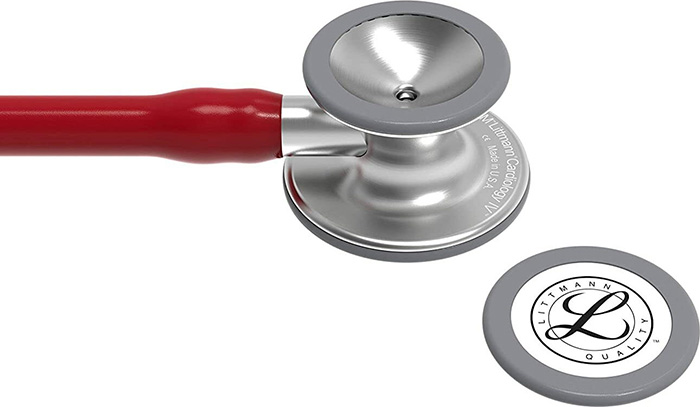The Littmann 3 Stethoscope is an essential tool that is used by many healthcare workers. It is used to examine a patient’s lungs and access the blood pressure. In this article, we’d tell you how the Littmann 3 Stethoscope operates and what you can do with it.
How To Operate The Littmann 3 Stethoscope
Holding it: When you are about to wear the stethoscope, hold it first in your dominant hand. It should be between your index and middle fingers just before your knuckles. To remove all entering noises, curl your thumb under the tube until it is still.
Wearing the stethoscope: You have to twist the ear tips for it to seal your ears. If you do it right, the tip should point towards your nose. This also means that the external noises will become softer.
Placing it: Your Littmann 3 Stethoscope should be placed against your skin. It can also rest on the collar of your shirt.
What Can The Littmann 3 Stethoscope Do?
Measure A Patient’s Blood Pressure
This is the most popular use of the Littmann 3 Stethoscope. Furthermore, some nurses might do it incorrectly, so read the manual properly. A patient’s blood pressure cuff usually inflates around the upper hand. So, you can use the stethoscope to listen to sounds right below that cuff.
Identify lung sounds
You can use this stethoscope to check proper breathing sounds. You can place it on the chest and the back. Furthermore, it helps to identify any lung inflammation or airway blockage in a patient’s body. Note that to get accurate listening, your patient should always lean forward during the back examination. This will help you make a better diagnosis.
Identify bowel sounds
Checking for abnormalities in the bowels is simple. It can get a little complex when there are possible bowel obstructions. You’d be able to hear bubbling and gurgling sounds like borborygmi. These sounds are harmless and you can ignore them.
It detects abnormal blood flow
Abnormal blood flow is also known as bruits. The bruit is a different kind of ‘whoosh’ sound you hear during diagnosis. It can be an indication of avascular problems. This is an indication that the artery is narrower than normal. It can also be a sign of a dangerous condition like aneurysms or arteriosclerosis.
Furthermore, these arteries where bruits are usually found includes:
- Iliac (pelvis)
- Temporal (forehead)
- Renal (kidney)
Now that you know all the great benefits of the Littmann 3 Classic, you should purchase one here. You can also check out the other Littmann stethoscopes as well.
 Send a Whatsapp Message
Send a Whatsapp Message Free shipping on orders above £49 |
Free shipping on orders above £49 | 


